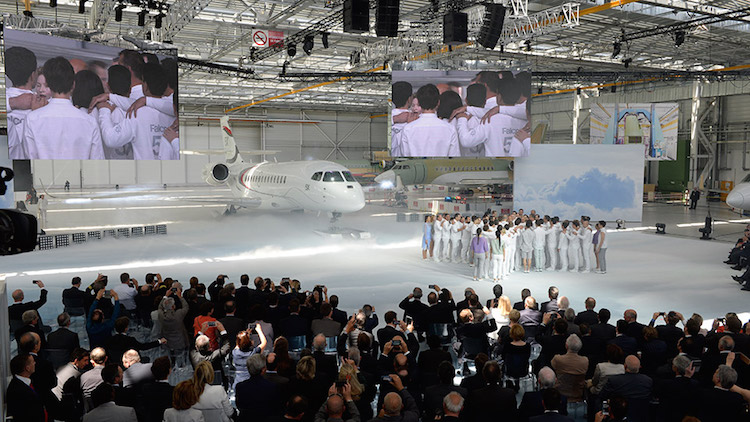
Dassault Aviation has ditched development of its Falcon 5X business jet in favour of an all-new design due to ongoing issues with the program’s Safran Silvercrest engines and the prospect of further setbacks to an already delayed entry into service.
The France-based airframer said on December 13 it had terminated the engine contract for the Falcon 5X with Safran.
“Safran met recurrent technical issues during the program development,” Dassault Aviation said in a statement.
Officially launched in October 2013, the Falcon 5X was designed to compete in the same class as the Bombardier Global 5000, the shorter range Gulfstream 450, and the Cessna Citation Longitude.

It was Dassault’s first all-new business jet in more than a decade.
Powered by two Safran Silvercrest jet engines each with 11,450lb of thrust, the aircraft was designed to fly 5,200nm with a cabin able to seat eight passengers alongside three crew. From Sydney, that would have placed cities in all of Japan, as well as parts of China and India, within nonstop reach.
A 14-passenger configuration for the ultra-wide business jet cabin, which measured 11.79m long, 2.58m wide and 1.98m high according to the Dassault website, was also to have been made available.
However, the program ran years behind schedule (certification was planned to occur in 2016 at the time the Falcon 5X was launched in 2013) as major technical issues in 2015 and 2016 led to a postponement of the flight test campaign.
This led to a three-year delay and resulted in 12 cancellations for the aircraft in 2016, Dassault Aviation said.
The Falcon 5X finally took off on its first flight in July 2017. However, this was not the start of the flight test campaign as the aircraft was fitted with what Dassault Aviation said at the time were preliminary versions of the aircraft’s engines.
These engines were “not compliant with the specifications”, Dassault Aviation said, with the full flight test campaign was scheduled to commence in 2018.
“In the fall of 2017, Safran experienced issues with the high pressure compressor and informed Dassault Aviation of an additional delay and new performance shortfall, making the 2020 entry into service of the aircraft impossible,” Dassault Aviation said.
“Considering the magnitude of the risks involved both on the technical and schedule aspects of the Silvercrest program, Dassault Aviation initiates the termination process of the Silvercrest contract leading to the end of the Falcon 5X program and plans to start negotiations with Safran.”
Dassault Aviation chief executive Eric Trappier said the new Falcon project would be powered by Pratt & Whitney Canada engines and feature the same cross section as the Falcon 5X, have a range of 5,500nm and would enter service in 2022.
“There is still a strong market need for a brand new long range aircraft with a very large cabin,” Trappier said.












